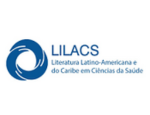Long term outcomes of lateral internal sphincterotomy for the treatment of anal fissure. Coloproctology Division of Surgical Clinic 2, Maciel Hospital
Keywords:
lateral internal sphincterotomy, incontinence, relapseAbstract
Background: Sternal lateral sphincterotomy is the treatment of choice for anal fissure when medical treatment fails. It has a high success rate but as a counterpart can present up to 10% variable degrees of incontinence:
Objective: To evaluate the results of lateral lateral sphincterotomy in a series of patients with anal fissure.
Materials and methods: Twenty patients with anal fissure were evaluated in whom a lateral internal sphincterotomy was performed at one year. The evaluation was done by personal or telephone interview. Two aspects were fundamentally analyzed: relapse of the symptomatology and sphincter function.
Results: all patients were discharged within 24 hours postoperatively with low levels of postoperative pain, controlled with oral analgesics. Ten days postoperatively they did not present major complications or intense anal pain in any case. No recurrences of the anal fissure were found at one year after the patients were monitored. Fecal continence levels were perfect in 17 patients (Wexner score 0) and in 3 patients (15%) incontinence was detected for gases and exceptionally for liquid substances (score 5)
Discussion: Internal lateral sphincterotomy remains a safe option for the treatment of anal fissure, with high levels of cure and low sequelae in sphincter function, mainly affecting gas continence
Downloads
Metrics
References
2. Nelson RL, Thomas K, Morgan J, Jones A. Non surgical ther- apy for anal fissure. Cochrane Database Syst Rev. 2012;15;(2):CD003431
3. Kiyak G, Korukluo?lu B, Ku?demir A, Si?man IC, Ergül E. Results of lateral internal sphincterotomy with open technique for chronic anal fissure: evaluation of complications, symptom relief, and incontinence with long term follow-up. Dig Dis Sci 2009;54(10):2220–4
4. Khan JS, Tan N, Nikkhah D, Miles AJ. Subcutaneous lateral internal sphincterotomy (SLIS)—a safe technique for treatment of chronic anal fissure. Int J Colorectal Dis 2009 24(10):1207–11
5. Zaghiyan KN, Fleshner P. Anal fissure. Clin Colon Rectal Surg. 2011;24(1):22-30
6. Misa R, Alonso O, Piñeiro S, Cazaban L. Fisura anal ¿quimica o quirurgica? Analisis prospectivo de 98 pacientes. Cir Uruguay. 2006; 76(2): 184-96
7. Elsebae MM. A study of fecal incontinence in patients with chronic anal fissure: prospective, randomized, controlled trial of the extent of internal anal sphincter division during lateral sphincterotomy. World J Surg 2007 31:2052–2057
8. Nyam DC, Pemberton JH. Long-term results of lateral internal sphincterotomy for chronic anal fissure with particular reference to incidence of fecal incontinence. Dis Colon Rectum. 1999;42(10):1306-10
9. Rotholtz NA, Bun M, Mauri MV, Bosio R, Peczan CE, Mezzadri NA. Long-term assessment of fecal incontinence after lateral internal sphincterotomy. Tech Coloproctol 2005; 9(2):115–8
10. Mente? BB, Ege B, Leventoglu S, Oguz M, Karadag A. Extent of lateral internal sphincterotomy: Up to the Dentate Line or Up to the Fissure Apex? Dis Col Rectum 2005;48(2):365-70
11. Bove A, Balzano A, Perrotti P, Antropoli C, Lombardi G, Pucciani F. Different anal pressure profiles in patients with anal fissure. Tech Coloproctol 2004;8(3)::151–7
12. Schornagel IL, Witvliet M, Engel AF. Five year results of fissurectomy for chronic anal fissure : low recurrence rate and minimal effect on continence. Colorectal Dis. 2011;4(8): 997-1000
13. Patel SD, Oxenham T, Praveen BV. Medium-term results of anal advancement flap compared with lateral sphincterotomy for the treatment of anal fissure. Int J Colorectal Dis. 2011;26(9):1211-4
Downloads
Published
How to Cite
Issue
Section
License
All articles, videos and images published in Revista Cirugía del Uruguay are under the Creative Commons CC licenses, which is a complement to the traditional copyright, in the following terms: first, the authorship of the referred document must always be acknowledged and secondly none of the article or work published in the journal may have commercial purposes of any nature. The authors retain their copyrights and give the magazine the right of first publication of their work, which will be simultaneously subject to the Creative Commons Attribution-NonCommercial 4.0 International License license that allows the work to be shared whenever the initial publication is indicated in this journal.


























